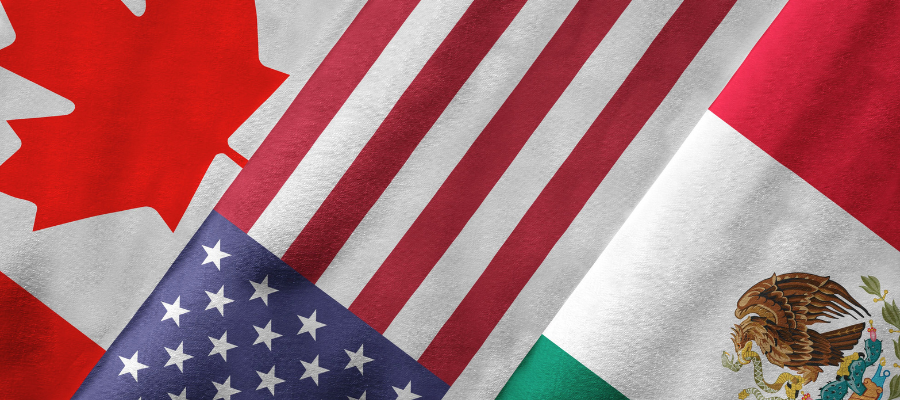
Table of Contents
USA, Canada and Mexico – three completely different journeys towards track and trace compliance
North America continues to be the largest pharmaceutical market in the world. Nevertheless, on the territory of the continent is the USA which has captured a dominant share of the pharma market worldwide, as well as Canada and Mexico. Our experience and research show that the three countries are in completely different phases.
DSCSA Final Countdown
The pharmaceutical market in the USA is projected to reach growth to USD 861.67 billion by 2028 at a CAGR of 6.3% in the 2021-2028 forecast period. Due to various factors such as COVID and the consequences thereof, a large number of prescription drugs were introduced on the market. During all this controversial time, the 10-year plan DSCSA is following the outlined steps to achieve interoperable, electronic tracing of products at the package level. The US government aims to enhance the pharmaceutical supply chain, enabling the identification and trace of certain prescription drugs as they are distributed in the United States.
As the DSCSA is on the horizon, here are a few steps for readiness self-check:
- Become familiar with the law – Drug Supply Chain Security Act (DSCSA)
- Become familiar with the serialization requirements
- Work with your trading partners to ensure they are familiar with the law
- Provide product tracing information (manufacturers, repackagers, wholesale distributors, and dispensers)
- Know how to handle suspect and illegitimate products (manufacturers, repackagers, wholesale distributors, and dispensers)
- Confirm ATPs (manufacturers, repackagers, wholesale distributors, dispensers, and third-party logistics providers)
- Report licensure (third-party logistics providers and wholesale distributors)
In April FDA published final guidance on definitions of suspect and illegitimate products for verification obligations and includes expanded definitions on “counterfeit”, “unfit for distribution”, “diverted”, and other terms not legally defined in DSCSA. Track and trace compliance would be seamless if you are up-to-date with the terms, steps and recommendations. The deadline for full interoperable electronic unit-level traceability is November 2023.
Canada
Although the Canadian Pharmaceutical market`s volume is comparatively smaller – USD 29,305.1 million in 2022, the country is quite proactive regarding the traceability of medicines.
In a February 2022 publication entitled “Roadmap to the Implementation of GS1 DataMatrix Barcodes on Pharmaceuticals in Canada,” GS1 wrote that Canada was actively working to require 2D DataMatrix codes on pharmaceutical products. GS1 Canada’s Pharmacy Board has approved a roadmap for expectations and requirements for manufacturers, distributors and pharmacies.
Canada’s proposed regulations will apply to all categories of pharmaceuticals: prescription drugs, behind-the-counter drugs, over-the-counter (OTC) drugs, and natural health products approved to be marketed under the country’s Natural Health Products Regulations.
The manufacturers shall affix a GS1 DataMatrix barcode to primary and secondary packaging, as well as permanently assign a unique GTIN to each packaging level and where feasible a GTIN to the Unit of Use Level, affix a GS1-128 at the case level and accept the addition of an optional GS1 DataMatrix (both barcode symbologies must contain the same GTIN).
The proposed deadline to have “system-wide capabilities” in place is December 2025.
Mexico
Mexico is the second largest pharmaceutical market, forming part of the LatAm region. Regarding the track and trace of medicines, COFEPRIS (the Federal Committee for Protection from Sanitary Risks) is working in collaboration with other LatAm countries` regulatory agencies. In 2021 the Ministry of Health evaluated the benefits of pharma track and trace and has taken initial steps to outline the benefits of a potential medicines serialization and traceability program.
Sources:
https://gs1ca.org/gs1ca-components/documents/2D_DataMatrix_Implementation_Roadmap.pdf





